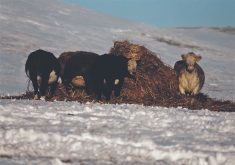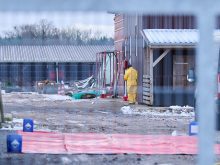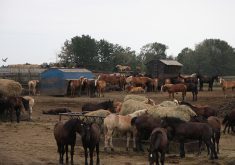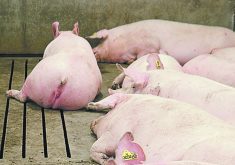Alberta dog owners are being cautioned to check their animals for Lyme disease-carrying ticks after a surprising number were found in the province.
Between 2007 and 2010, around 1,200 ticks were removed from hosts, mostly dogs in Alberta.
Of the 108 ticks sent to the lab by veterinarians, 22 tested positive for the presence of the Lyme disease pathogen. Sixteen of the 22 ticks had not travelled outside the province.
“The surprising thing was just how many we found,” said Daniel Fitzgerald, a University of Alberta agriculture student who did the research as part of his master’s thesis.
Read Also

University of Saskatchewan experts helping ‘herders’ in Mongolia
The Canadian government and the University of Saskatchewan are part of a $10 million project trying to help Mongolian farmers modernize their practices.
Ixodes scapularis, the tick known to spread Lyme disease, which is harmful to humans, was the fifth most common tick on dogs that hadn’t left the province.
“That was surprising to see that many here. Obviously, we expected to find a few, but to have them make up 10 percent of ticks on dogs that hadn’t travelled anywhere, that was a big surprise,” said Fitzgerald, of Edmonton.
While the occasional Lyme disease-carrying tick has been found in the province before, they are believed to have hitchhiked into the province on birds or dogs vacationing with their owners.
More than 60 percent of the dogs in the survey had been out of the province.
Just because ticks have been found in Alberta doesn’t mean they are actually living here permanently, said Fitzgerald.
“Are they still just hitchhiking ticks, or are we actually seeing ticks living in Alberta?” said Fitzgerald.
With his master’s thesis now complete, Fitzgerald’s part of the Alberta Agriculture tick survey is finished. Follow-up research is needed to find out if the ticks are living in the province, or brought in through migrating birds or vacationing dogs, he said.
There were 16 species of ticks identified including Ixodes scapularis.
Ticks testing positive for the bacteria were found in Ardrossan, Barrhead, Beaumont, Calgary, Devon, Drumheller, Edmonton, Fort McMurray, High River, Langdon, Lloydminster, Sherwood Park, St. Albert, Stony Plain, Tofield and Viking.














